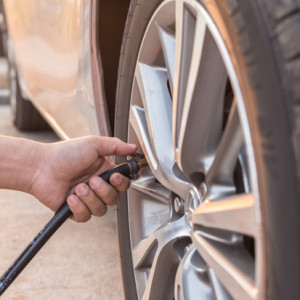Question of the week: Should I be worried about tyre pressures in hot weather?


David Ross, EditorFri, 11 Jul 2025

Dear Honest John, "I have a 2015 Porsche Macan with Michelin Latitude Sport tyres all round, with 32 PSI at the front and 36 PSI at the rear. After a recent motorway journey in hot weather, the fronts were up to 38 PSI and the rears to 42 PSI.
I expect to be travelling on French motorways soon and the heat is likely to be greater. Is high PSI a worry?" - TS
Dear TS, Tyre pressures vary naturally with temperature, both in terms of the ambient temperature as well as the air inside the tyres getting warmer as the vehicle is in motion. Typically the change is between 1 and 2 PSI for every 10?C of ambient temperature increase, so the increase you have seen is likely a combination of both.
Tyres are built with tolerances to allow for variations in pressure, but obviously what you want to avoid is the combination of these factors causing the tyres to exceed the maximum recommended pressure. Even if the likelihood of a blow out is slim, an over-inflated tyre will reduce the available grip and cause premature wear. If you are driving long distances at higher speeds with ambient temperatures of significantly more than 30?C, you may wish to set the tyres to their lowest recommended pressure and monitor them via the TPMS.
As always, setting the tyre pressures when cold is the recommended approach. Ask HJ
Will reducing tyre pressures for a better ride mean more damage from potholes?
I drive a 1.4 Suzuki Vitara with the Continental tyres set at the higher Eco pressure setting for economy. This gives great miles per gallon on motorways, but on pot-holed roads around town the ride can be bumpy.
I can reduce the tyre pressure to the lower Comfort setting, but would softer tyres be more likely to suffer damage from pot holes? Alternatively, is there another make of tyre that would give both good economy and a softer ride?
High tyre pressures reduce the likelihood of a puncture occurring from the tyre being pinched but also carry a potential higher risk of being punctured by a sharp edge or debris than a lower pressure, so there is no perfect pressure but a compromise between the two extremes is likely to give the best puncture resistance. You can use a retail website such as blackcircles.com to view a wide range of tyres in the required size which also shows the economy rating, but ride quality is typically determined by the aspect ratio or sidewall size of a tyre in relation to its overall size and tyre pressures.You may also wish to consider fitting smaller wheels, as these would typically have a taller sidewall for better ride quality and less width, which usually means lower rolling resistance and therefore better fuel economy. 
Answered by David Ross
More Questions[1]References
- ^ More Questions (www.honestjohn.co.uk)